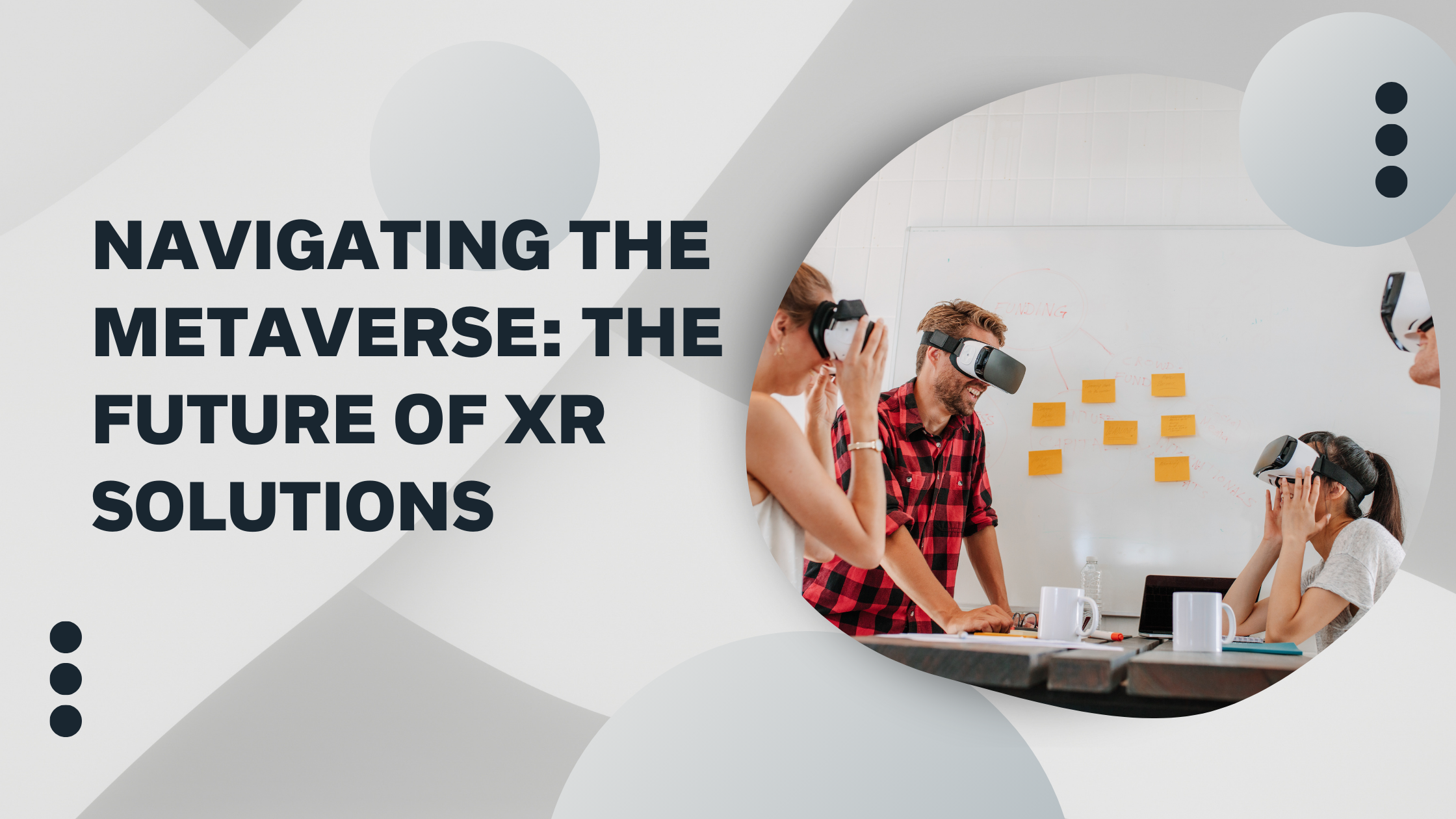As the digital landscape continues to evolve, the term “metaverse” has become synonymous with the next frontier of online interaction. Encompassing a blend of augmented reality (AR), virtual reality (VR), and mixed reality (MR)—collectively referred to as extended reality (XR)—the metaverse promises to redefine how we connect, work, and play. This blog explores the potential of XR solutions within the metaverse and what it means for the future.
Understanding the Metaverse
The metaverse can be described as a collective virtual space that integrates physical and digital realities. It’s a persistent, shared environment where users can interact with one another and digital entities in real time. Imagine stepping into a digital world where you can attend meetings, explore new places, socialize, and even shop—without leaving your home. This concept is not merely a futuristic vision; it’s gradually becoming a reality thanks to advancements in XR technologies.
The Role of XR Solutions in the Metaverse
- Immersive Experiences
XR solutions allow for unparalleled immersive experiences. Virtual reality creates fully interactive environments, while augmented reality overlays digital information onto the physical world. In the metaverse, these technologies combine to provide users with a seamless experience. Whether you’re attending a virtual concert or exploring a 3D model of a new product, XR enables a level of engagement that traditional media simply cannot match. - Enhanced Collaboration
The rise of remote work has changed how we approach collaboration. XR solutions provide tools that facilitate real-time interaction, making remote collaboration feel more natural. Imagine a virtual meeting room where team members can interact with 3D models, brainstorm on virtual whiteboards, or even engage in role-playing scenarios. These immersive environments foster creativity and teamwork, breaking down the barriers of distance. - Education and Training
The educational sector stands to benefit significantly from XR solutions within the metaverse. Imagine medical students practicing surgical techniques in a virtual operating room or architecture students walking through a digital replica of their design. These simulations offer hands-on experience without the risks associated with real-world training. Moreover, learners can collaborate across geographical boundaries, enriching the educational experience. - Social Interaction
The metaverse offers new avenues for social interaction. Virtual environments enable users to meet friends, attend events, or simply hang out in a shared space. XR solutions enhance these interactions, allowing for emotional connections that text and video chats often lack. Features like avatars and customizable environments add a personal touch, making online interactions feel more genuine. - E-commerce Revolution
Shopping is poised for transformation in the metaverse. XR solutions can create virtual storefronts where consumers can browse products in 3D, try on clothes via AR, or even experience a product before purchasing. This immersive shopping experience can lead to higher engagement and conversion rates, as customers feel more connected to their purchases.
Challenges Ahead
Despite the promising future of XR solutions in the metaverse, several challenges need addressing:
- Technology Accessibility: Not everyone has access to high-end VR headsets or AR devices. Ensuring that XR experiences are available across various devices will be crucial for widespread adoption.
- Privacy and Security: As users immerse themselves in virtual environments, the collection of personal data becomes a significant concern. Safeguarding user information while maintaining a rich experience is a balancing act that developers must navigate.
- Interoperability: For the metaverse to truly flourish, different XR platforms must be able to communicate with one another. This interoperability would allow users to transfer assets, avatars, and experiences seamlessly across different environments.
Looking Ahead
As we navigate the metaverse, the potential for XR solutions is immense. Companies across various industries are already investing in this technology to stay ahead of the curve. For instance, brands are exploring virtual pop-up shops, events, and interactive experiences to engage customers in novel ways.
Furthermore, as technology evolves, we can expect even more sophisticated XR solutions. Innovations like haptic feedback, AI-driven avatars, and spatial audio will enhance the realism of these experiences, making the metaverse more engaging than ever.
Conclusion
The future of XR solutions in the metaverse is both exciting and challenging. As we stand on the brink of this new digital frontier, the potential for enhanced interaction, collaboration, and innovation is immense. Whether it’s transforming how we work, learn, or socialize, XR technologies will play a pivotal role in shaping our experiences in the metaverse.
Embracing these changes will require a collective effort from technology developers, businesses, and users alike. The metaverse is not just a place to visit; it’s a new way of being. As we venture into this digital realm, the possibilities are limitless, inviting us to rethink our connections and interactions in profound ways.
Embracing these changes will require a collective effort from technology developers, businesses, and users alike. The metaverse is not just a place to visit; it’s a new way of being. As we venture into this digital realm, the possibilities are limitless, inviting us to rethink our connections and interactions in profound ways.
